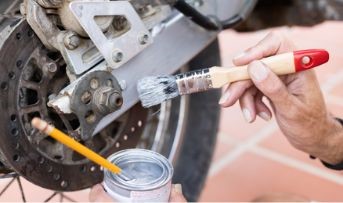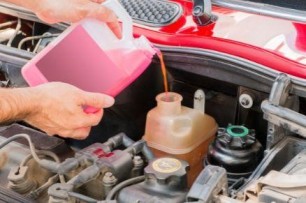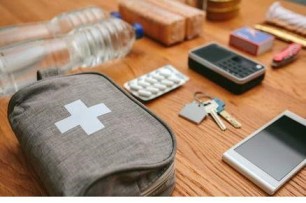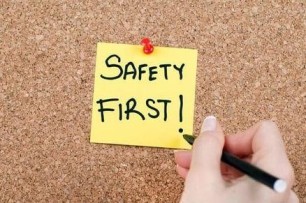General Insurance Blogs, Articles & Updates by - Magma HDI
Have us call you
- RENEW YOUR POLICY
- BUY NEW POLICY

Visit these exclusive palace hotels to enjoy the rich culture and heritage of India
India has long been recognised for its illustrious past and imperial way of life. Its royal palaces were formerly the official residences of royal families but have since been turned into luxury historical hotels with old-world elegance and modern comforts.
Plenty of great palace hotels, particularly in the state of Rajasthan, are now open to visitors. You can visit these exquisite heritage hotels for your extended weekend plans and summer vacations. All of the listed hotels provide splendid service and a more personal experience.
Here are the four Indian palaces turned into hotels where you may indulge the maharaja inside you.
1. Taj Lake Palace, Udaipur:
The Taj Lake Palace in Udaipur is a historic hotel with magnificent rooms and many grand suites. Its location on an island in the middle of the lake Pichola provides exceptional sights of the nearby Aravalli hills, City Palace and Jag Mandir from each room.
The breathtaking setting is ideal for the delicious cuisine served at Taj Lake Palace's fine restaurants, solely available to resident guests. Udaipur, dubbed as the Venice of the East, has a great deal to offer with its spectacular palaces, serene lakes, fascinating temples, and beautiful gardens.
2. The Lalit Grand Palace, Srinagar:
The hotel was designed and constructed by Maharaja Pratap Singh during the 1900s. It has witnessed significant events in India's history and proudly continues the royal lineage with elegance.
It maintains well-equipped luxury suites, including cottages with spectacular design, an ample dining space, and a retail arcade. This beautiful palace is surrounded by the Himalayan peaks and overlooks the gorgeous Dal Lake.
3. Umaid Bhawan Palace, Jodhpur:
This piece of art built between the 1920s and 1940s is part of Rajasthan's legacy and a symbol of contemporary Jodhpur. The palace, formerly home to the royal family of Jodhpur, is now the world's 6th biggest private property.
One common feature that this property shares with Agra's Taj Mahal is the palm court marble used in its design. The palace is situated on Jodhpur's highest point, the Chittar Hills. Get impressed with unique views of the old Blue City, vast dunes, and the magnificent Mehrangarh Fort as you stay here.
4. Rambagh Palace, Jaipur:
Rambagh Palace, established in 1835, was home to Sawai Man Singh II. This jewel of a hotel has magnificently refurbished big luxury rooms and suites that were the erstwhile Maharaja's bedrooms once upon a time.
The palace has been lavishly embellished with hand-carved marble and beautiful Mughal Gardens. Immerse yourself into the finest of Rajasthan's royal history within this splendid palace.
Heritage hotels in India provide a royal treatment to the inner maharaja inside you. They are as stunning, if not more so, than any of Europe's colossal castles or impressive palaces. These remarkable palaces ensure a great and unique holiday to be remembered for years to come. As you plan your visit to these genuinely magical places, make sure you add general insurance to your checklist. Get the best plans for yourself from the most trusted general insurance company and make your travel plans safe and stress-free this summer.
Click HERE to buy insurance from the best general insurance company.
Disclaimer: The information provided above is for illustrative purposes only. To get more details, please refer to policy wordings and prospectus before purchasing a policy.

Here are the top things to consider before you buy a used motorcycle
The volatility of employment and predicting an incoming global economic recession are challenging. These make the consumers to save for tomorrow rather than spend on luxuries and comforts today. While motorcycles are cheaper than cars, they are by no means easy to afford with rising inflation, fuel costs, and other allied servicing costs.
This often leaves a majority of potential buyers to consider a second-hand motorcycle. While many have concerns about buying used motorcycles, by doing due diligence, inspecting the vehicle's mechanical condition, and purchasing two-wheeler insurance India, you can get your hands on a beneficial asset that can provide you with value for years to come!
Here is a checklist of bike parts and inspections to run through before purchasing a used motorcycle.
1. Engine:
The engine is the heart of any vehicle. To check the engine's condition, request the seller not to run the bike. A cold start is the best way to gauge the engine's usage and wear and tear. Look out for smoke from the exhaust pipe or any sputtering noises. Oil leaks are another sign to keep a watch for.
2. Drive chain and sprocket:
While these components may seem highly technical, they are readily identifiable parts in all two-wheelers. Simply put, it refers to the bike chain and the chain wheel, which facilitate gear engagement, acceleration, and power transmission.
Ideally, the chain should only have a slack of three-fourths of an inch to function appropriately and should not shift off the wheel when prodded. If the wheel displays signs of corrosion or wear and tear, it indicates a poorly-maintained bike. Ensure you list your dissatisfactions and factor them in when negotiating a fair price with the seller.
3. Tyres:
Well-maintained tyres are essential for a safe riding experience. Put the motorcycle on its centre stand and check its tread depths. Ensure that they are not too deep, which results in poor gripping and an excess risk of accidents. Cracks along the inner side or rubber toughening are signs of weathered tyres.
Also, check the wheel alignment by spinning the rear wheel. Any wobbling or creaking are indicators of weathered wheel bearings which require replacement. Ensure you check the tyres thoroughly to estimate the cost of repairs and acquisition of the used motorcycle.
4. Visible frame:
The motorcycle's frame can be challenging to inspect depending on the effort spent to spot the issues. Scratches and dents may be the signs of accidents that inevitably affect the overall functionality of the bike's components.
In case you purchase such bikes, even after buying two wheeler insurance India, you may not be able to claim the insurance amount due to the vehicle's poor condition before the accident.
5. Under-seat storage:
An often overlooked part, the under-seat storage locking mechanism, must be checked when purchasing the vehicle. Feel around the space underneath the seat to ensure that it is steady to fit your belongings.
6. Odometer:
Contrary to popular belief, it is easy to replace an odometer. Sellers of old vehicles can tamper with the odometer and try to sell off an old bike as a relatively new one. After inspecting the motorcycle as per the above checklist, check the odometer reading. Ensure that it is aligned with the condition of the vehicle.
While this is not a comprehensive list, it covers the essential things to check before purchasing a used motorcycle to protect yourself from misrepresentation and unfavourable deals. Additionally, since used bikes have a relatively unsafe perception, we recommend buying 2 wheeler insurance online to protect yourself from the risk of financial losses due to accidents.
Click HERE to buy a robust 2 wheeler insurance online for your motorcycle.
Disclaimer: The information provided above is for illustrative purposes only. To get more details, please refer to policy wordings and prospectus before purchasing a policy.

What happens to your car's engine if you drive it without coolant for long
Much like oil, the coolant in your car is a special fluid that can't be overlooked. Although, in comparison to oil, the coolant needs less attention. Car owners often tend to neglect it, which can severely damage the vehicle and potentially be life-threatening.
This post will give you a clear idea about what will happen if you drive with low or no coolant.
What is coolant?
Coolant is a combination of water and antifreeze. It has a greater boiling point than water, and works at higher temperatures and pressures to regulate the heat generated in the engine. It takes heat from the engine and radiates it back into the atmosphere via your radiator.
Here are the effects of driving with insufficient coolant.
1. Overheating:
The main function of a coolant is to extract heat from the engine. A shortage of coolant may cause your car engine to overheat. If you continue to run an overheated engine, there could be irreversible damage, such as pistons welding to the cylinders.
2. Engine cutoff:
Modern vehicles feature a safety mechanism that will turn off the engine if it suffers considerable damage due to a lack of coolant. Although this function can help you save on engine repairs, it can leave you stranded on the road.
3. Damage to the water pump:
The water pump’s function is to circulate coolant throughout the engine. The pump will continue to run dry if there is insufficient coolant. If the pump goes dry, racks and pockets of air will form in the coolant channel. This increases the pump’s burden and can destroy it permanently.
4. Damage to engine:
The engine blocks are not the only sections that can be damaged by overheating. Many other components can become exposed to heat.
Below is the overview of parts that may suffer the wrath of an overheated engine:
• Head gaskets
• Cams and pulleys
• Warped or bent connector rods
• Crankshaft
• Piston timing
• Connecting rod
5. Decreased mileage:
Your car's engine will be less efficient if you don't have enough coolant. Friction generates more heat, which means more energy is spent. As a result, the fuel efficiency is dismal.
How to identify low coolant levels?
1. Dashboard Warning:
The coolant warning light will light up on your dashboard when car sensors detect a low level of coolant. Keep an eye on your dashboard; it is essential to note that not all cars, especially the older ones, have this feature. Therefore, consider manual checking of the level periodically.
2. A.C. blows hot air:
If your AC unit starts blowing hot air, it is a sign of a lack of coolant.
3. Lower mileage:
Your car starts to consume more fuel per km and shows reduced engine performance.
4. Temperature gauge rise:
The temperature levels of internal components start showing an unexpected spike due to the low level of coolant.
It is vital to make regular coolant checks a habit. If your car's coolant runs out, pull over immediately. Let the engine cool to a safe operating temperature before going to the nearest garage.
If you're unable to drive to a garage, have your car towed to avoid the risk of further damages. Car insurance proves to be a valuable investment in such situations. So, purchase a car insurance policy that provides you with your desired benefits and adds value to your four-wheeler.
Click HERE to invest in ideal car insurance that meets all your requirements.
Disclaimer: The information provided above is for illustrative purposes only. To get more details, please refer to policy wordings and prospectus before purchasing a policy.

Here are a few security regulations that the next-generation cars need to adapt
Technological advancements are visible in a country like India, where economic developments are happening rapidly. These changes are accelerating the growth in all sectors, including the automobile sector. The car industry is an essential growth driver of the Indian economy, and a lot is yet to be done in this field.
Additionally, the Indian economy is set to grow by 7.4% in the coming years. This will significantly impact the automotive industry as well. Car sales in the country have grown by 50% in the last few years, and it is set to record more in the coming years. Automobile ownership will take a giant leap and be a convenient option for most commuters.
However, with such growth, the risks also increase. This also leads many fraudsters to take different ways and means to hack and steal. As the existing state of motor security in India is inadequate, every motor insurance company in India is trying to protect people against such crimes.
All next-generation cars must follow more security regulations to address these challenges. Let's have a detailed look at them.
What is the current scenario of vehicle security in India?
Like everything else, the car security statistics of India are not satisfactory. Every year, more advanced means of theft are discovered. Car theft, hijacking, and robbery are common matters these days. The cars are also more prone to theft because there aren't enough safe parking spaces, which makes them easy targets for carjackers.
What is car hacking?
The automotive industry is under the radar of cyber criminals every day. As the technology is being developed, the risk increases. Vehicles are more connected and automated than ever. This allows cybercriminals to hack into the system and steal valuable data.
They make use of malware to get into the vehicle's system and gain access to all the connected devices as well. These mischievous minds can use this to steal financial data, personal information, and the car.
They make use of malware to get into the vehicle's system and gain access to all the connected devices as well. These mischievous minds can use this to steal financial data, personal information, and the car.
What can be done to prevent it?
After the car theft crime rate is increasing rapidly, the Indian government initiated various guidelines for the automobile industry. These security regulations need to be thoroughly followed by all future vehicles. These rules will keep drivers safe and expect to reduce the crime rate. These are
1. Security standards:
The government is trying hard to elevate the safety standards of vehicles. This means that all vehicles need to be equipped with GPS trackers in the future. Additionally, an anti-theft device should be placed too.
2. Using a High-Security Regulation plate:
HSRPs come with a non-removable snap-on lock which is irreplaceable. All the vehicle details, like chassis and engine numbers, can be collected and stored in a secure database using HSRP. These unique number plates will bring uniformity by eliminating the use of fancy plates. This can also aid authorities in easily tracking your vehicle's registration number.
3. Update all software:
It is crucial to regularly update all security patches of your vehicle's firmware and other IoT software to eliminate any possibility of hacking or breaches. Another advanced solution for connected vehicles includes public-key infrastructure (PKI) that ensures a superior level of security.
4. Awareness:
Regular awareness drives and car security campaigns are mapped out for all car owners so that they can be prevented from theft. This also includes educating them about tracking devices, hacking, etc.
5. Accessible public transportation:
The government is creating a massive public transportation infrastructure for the general public's convenience. Buses and metros are being developed every day, and more cities are being included in the list of metros. This will reduce the dependence on private vehicles.
The future of next-generation cars relies on technology. GPS trackers, Bluetooth connectivity, and anti-theft devices are the future of the automotive industry. They will be mandatory in the future. Every motor insurance company is considering them while planning out their insurance policies.
Click HERE to buy a policy from the best motor insurance company.
Disclaimer: The information provided above is for illustrative purposes only. To get more details, please refer to policy wordings and prospectus before purchasing a policy.

Five best two-wheeler renting tips to enhance your riding experience
Various fitness trends have come and gone since the 2000s, but people are still looking for new ways to get fit. With the global pandemic hitting us, people now prefer to work out in their homes because of the government’s orders to close gyms. As a result, online gym classes are also on the rise. Let us look at the upcoming fitness trends in 2022.
Riding a two-wheeler is the perfect way to beat traffic on busy roads. Every bike enthusiast who desires to ride their choice of a two-wheeler can rent a bike to explore unexplored destinations. You can rent them as long as you want without worrying about maintenance or other concerning factors.
Additionally, travelling on a two-wheeler is best to explore a new city or destination. It’s fascinating to see new sights and meet locals to spend quality time. This blog has highlighted some of the most practical tips to ensure a safe and memorable riding experience when you rent a bike. So, let’s dive into the details!
1. Take your time and inspect your vehicle:
Don’t get carried away and end up choosing a bike based on its appearance rather than its performance. Ensure that the brakes, engine, lights, side mirrors, and other essential features are working properly. Take a test ride of the bike you’ve chosen so that you can identify the minor to major problems. If you happen to find any damage or visible dents, take a picture of them so that you’re not accused of harming the bike.
2. Choose a bike based on your ability:
Do not go for a bike that is not suited for you. It will help if you do not opt for expensive bikes unless you have the money to pay (in case of damages) or put a dent in them. Similarly, stay away from bikes providing you with cheap rental rates. There are chances that the “cheap” rented bikes are either damaged or have issues that may land you in a problematic situation. Instead, choose according to the vehicle’s weight, acceleration, and the purpose of your renting. Ensure that the selected vehicle is well suited for the roads you intend to ride, providing you with a safe, less risky, and smoother experience.
3. Go through the reviews of the rental company:
Most bike rental companies tend to attract customers with low rental rates. Do not fall for the trap and choose bikes that have travelled many kilometers. Always check that the bike rental service has a good reputation and customer reviews.
4. Keep your license and bike papers handy:
Always check the validity of your licence before renting a vehicle. Carry your licence and the bike papers wherever you go. Ensure that your bike rental service company provides you with insurance, bike registration number, and pollution under control certificate.
5. Carry essentials:
Keep essential spares like a spare tube, spark plugs, brake, and accelerator cables. Prioritise your safety by always wearing protective gear while riding. Ensure the safety gears and helmet are in good condition and of the best quality. There’s a brilliant range of motorcycle luggage saddlebags available in the market. You can keep the saddlebags on the back or side of your bike or tanks that can carry light stuff. Furthermore, put your health and safety first and carry first aid kits with all the needed tools and medicines.
Two-wheeler renting can be made hassle-free by following these handy tips. Self-riding bike rentals offer you the freedom to choose and travel at your convenience and pace at reasonable rates. Make your daily commute comfortable by using a rented bike. But, you shouldn't neglect safety at any point. Ride with proper safety gear and ensure that you collect all the required documents like the PUC and even the insurance papers to verify that the vehicle is insured by the best two wheeler insurance in India. Thoroughly conduct these practices before renting the two-wheeler to have a flawless experience.
Click HERE to browse through the best two wheeler insurance in India.
Disclaimer: The information provided above is for illustrative purposes only. To get more details, please refer to policy wordings and prospectus before purchasing a policy.

Is your car making unusual noises? Know what they could mean
People are emotionally attached to their car so much that even a small scratch or dent woes their heart. What bothers them more is when the car makes strange noises. This situation sometimes leads to trouble. So instead of panicking, you need to understand the underlying cause and take your vehicle to a mechanic if required.
We've created a list of seven common car noises to listen out so that you identify and then fix them at the early stage itself.
1. Squealing sound:
One of the most frequent noises is a screeching sound from under the hood. It hints that the rubber belts that drive accessories such as AC compressor or power steering pump have either slipped off or worn out. If the screeching originates from the wheels when you use the brakes, it might indicate that your brake pads are weary or have faults with the braking system. On the other hand, if the squealing comes from your tyres, it may be due to a loose wheel cap or rims.
2. Hissing sound:
This sound underneath the hood indicates a fluid leak onto a hot engine component—for instance, radiator coolant seeping onto the engine block or exhaust manifold. If the hissing occurs while you accelerate, it might result from a vacuum leak from one of the small hoses around the engine's air intake.
3. Rattling sound:
Rattles suggest that something is loose or has stuck itself in an inappropriate place. For example, a component of the exhaust or suspension might have been broken loose. Mind it; this one needs attention as soon as possible. Remember, if you need an expert mechanic to ensure preventative maintenance, suitable car insurance helps you with your costly repair bills.
4. Whistling sound:
Whistling sounds are disturbing and might indicate a vacuum leak in one of the hoses around the air filter, which can be challenging to locate but is typically straightforward to fix.
5. Clunking sound:
If you hear a clunking sound when you apply the brakes, it might reflect that the braking discs or pads have severe wear or damage. If the clunk occurs when driving over bumps, your car's suspension may be faulty, or an exhaust section may be loose. If your automobile clunks when turning corners, it might be due to a problem with the steering or a worn-out wheel bearing.
6. Roaring sound:
When you accelerate, a roaring or noisy exhaust indicates that the existing exhaust system has eroded to the point that the silencer is no longer keeping the car quiet. Although an exhaust problem is unlikely to cause your automobile to stop or cause more damage, it may be allowing carbon monoxide fumes into the cabin, which is hazardous. Get it fixed ASAP!
Next time when you're out for a drive, apart from listening to the music, make it a point that you hear your vehicle first. You won't want to experience an awful drive with crazy noises that result in the breakdown of your car midway.
Few noises may indicate possibilities of damages. It is, therefore, important to get your car inspected at a service station to address the issue. Additionally, with time, the repair cost will also keep on increasing. So, reduce dependencies on the additional expenses, and consider purchasing car insurance to add value to the life of your car. With the best car insurance protection, give your four-wheeled companion the strength to drive more miles together.
Click HERE to know about the best car insurance plans in the market in 2021.
Disclaimer: The information provided above is for illustrative purposes only. To get more details, please refer to policy wordings and prospectus before purchasing a policy.

Keep these essentials in your two-wheeler riding kit at all times
In a busy and constantly moving country like India, most of the population uses two-wheelers as the daily mode of transportation. Regardless of whether you ride your two-wheeler every day or just a short trip to a grocery store, it is a good idea to carry some essential items in your two-wheeler riding kit. This includes everything from motorcycle replacement parts, first aid kit to important documents and 2 wheeler insurance.
In this article, we'll tell you exactly how to put together a riding kit that will be an excellent aid in chaotic situations.
1. Keep the basic spare parts:
You should always have some vehicle spare parts and equipment handy so that you can be the mechanic of your two-wheeler during an emergency. A few extras to have in your tool kit are a screwdriver, a headlight bulb, and battery fuses.
2. First-aid kit:
First-aid kits have always been prioritized when driving vehicles, but how many of us religiously carry them? If NO, then pack one today and take it the next time you leave your home on your two-wheeler. Some fundamental essentials must be an antiseptic solution, bandages, pain relief sprays, and painkillers. However, this kit is to be used only on minor injuries like cuts and scratches. In case of significant damages from accidents, approach for assistance and go to the hospital right away.
3. Accessories for personal protection:
Riding on a bike is not a fun game each time. It can get tougher with distance and situations. It is dangerous to ride a two-wheeler without wearing a proper helmet. A full-face helmet should always be part of your riding kit. Also, ensure to kit up appropriately with something that is breathable and will keep you at ease. Hence, have a decent quality sunscreen or scarf to protect your skin from exposure to the sun, dirt, and pollution.
Besides, staying hydrated throughout the day is important and neglecting it while riding isn't an option. So, having a water bottle on your bike is always a good idea.
4. Necessary documents and paperwork:
Traffic police regularly drive campaigns of checking the legal papers. If found riding without legitimate documents, you can face the consequences by the authorities. Therefore, when travelling on your bike, it is mandatory to have a Rider's Driving Licence, Registration Certificate, PUC Certificate, Fitness Certificate and a valid 2 wheeler insurance policy.
It is believed that 'life is always better on two wheels'. However, in a country full of turns, traffic congestion, narrow lanes and potholes, the possibility of vehicle breakdown is a prime concern among two-wheeler riders. So, if you think that you're a pro rider, you're also not completely safe on the roads. The above essential items are for your convenience on the road and quick-fix minor issues when they arise. Keeping these points in mind, put together your necessary bike riding equipment, ensure your bike papers, including valid 2 wheeler insurance before you kick-start the bike next time.
Want to know more about our best two-wheeler insurance policy? Click HERE .
Disclaimer: The information provided above is for illustrative purposes only. To get more details, please refer to policy wordings and prospectus before purchasing a policy.

Here's why you should prioritise early diagnosis and treatment of minor illnesses
Diagnosis is the point around which judgement and logical reasoning move, bringing the light of scientific clarity. Therefore, the detection of a sickness or health condition should be an essential component in the practice of medicine or surgery. It serves as the cornerstone or foundation for the doctor to develop a treatment strategy and determine the prognosis.
Early diagnosis is better as it gives us ample time to decide the treatment. Also, it saves us from worrying about the severity of the illness.
The significance of early diagnosis:
According to a significant analysis of the benefits of early detection, a diagnosis frequently meets with skepticism, anger, loss, and sadness. Critically, how patients are notified about their results and the degree of care available to them and their families determines their response.
Advantages of early diagnosis:
An early diagnosis and access to the appropriate resources and support may assist people in taking control of their illness, planning for the future, and living a healthy life. In addition, it will help in ruling out the chance of other potentially curable diseases and other alarming health concerns.
It can help a person acquire access to critical information and resources, make the most of their skills, and perhaps benefit from available drug and non-drug therapies. A quick diagnosis allows a person to be vocal and explain the changes in their life to family and friends. On a practical level, a person may assess their financial status and consult with family or legal specialists about establishing a lasting power of attorney or an advance decision.
There is significant evidence that a sooner diagnosis improves the quality of life. It avoids premature or needless admission to a care home or hospital, improving the way of life for patients and their caretakers while saving money on long-term care expenditures. The earlier a person gets diagnosed, the more successful the treatment can be.
Why some individuals may object to an early diagnosis:
According to a study, common illnesses are people's most significant concern in old age, surpassing cancer and any other ailments. Yet, some with early indications of these diseases opt not to seek a diagnosis due to concerns about the impact on their everyday life, employment, social lives. The anxiety overpowers the thought of obtaining proper medical treatment in the initial stage itself. Moreover, if early detection is ignored, it may worsen the situation for the patient to sustain treatment and recovery.
However, the benefits of an early diagnosis far outweigh these concerns, and a person suffering from a curable disease can receive the appropriate care and support to be fit again.
Indeed, the sooner the diagnosis, the better. The reason to attribute this comprises the excellent therapies that effectively cure the early stages of the sickness. Diagnosis allows us to treat a problem before it progresses to an ultimately lethal stage. Never fear your health. Take charge of it and keep yourself mentally strong to tackle the situation with vigour.
Additionally, make it a habit to invest in health insurance for you and your family to ensure your well-being and lead a less stressful life. Insurance firms provide exclusive incentives and benefits to those investing in online health insurance plans.
To get your online health insurance, click HERE .
Disclaimer: The information provided above is for illustrative purposes only. To get more details, please refer to policy wordings and prospectus before purchasing a policy.

Proven ways to stop worrying and overthinking
Overthinking is a thief of your energy. It takes away your peace and composure of mind. It is an art of creating problems that don’t even exist. Unfortunately, some individuals can’t seem to stop their minds from wandering with many thoughts. It’s like running a marathon each day mentally.
You invest your time, attention, and energy in thinking about situations and issues that are irrelevant, hypothetical, or baseless. Breaking this toxic habit will help you with extra mental energy to get the express ticket to happiness. Follow our brief guide about reducing and eventually stop worrying and overthinking.
1. Don't be mind-full; instead, be mindful:
Whenever you catch yourself overthinking, take a moment to reflect on your thoughts. Breathe and acknowledge the present moment. Then, challenge your thoughts and try to be aware of what's happening around you as much as possible.
2. Focus on solving problems and not amplifying them:
Overthinking about a problem will only lead to more problems. When you're actively investing your mind into problem-solving, you're using your best asset (the brain) positively.
3. Change your perspectives on things:
Stanley Gordon West once said, "Smile, and the world smiles with you". Changing your point of view can provide you with a completely different way of thinking and feeling about yourself. Moreover, changing your point of view might lead to a whole new universe of possibilities and ideas.
4. Diet plays a vital role than you think:
As Ayurveda rightly says that Medicine is not needed if the diet is correct; healthy food improves brain function, regulates blood circulation, reduces blood pressure, and eliminates toxins from the body. These aspects can directly impact your pattern of thinking and help positive outputs throughout the day.
5. Stop being a perfectionist. Even the almighty isn't:
It is a double-edged sword. Sometimes being a perfectionist is like being your enemy. Rather than assisting you in achieving success, it works against you. So next time you're worrying and overthinking about making a presentation perfect, consult your colleague. It can turn out that your existing one is already good.
6. Take out time to reflect at regular intervals:
Whether daily, weekly, or once a month, take out some time for reflective thinking. This task will assist you in examining your assumptions and making connections between different bits of information systematically.
7. Techniques to cope:
Try these techniques mentioned below to bring your attention back to the present whenever you feel overwhelmed.
You can follow these tips anytime and anywhere:
• Meditation: The best escape to calmness is meditation. Getting answers to unsolved questions becomes easy when your mind is free from junk thoughts. So invest 10 to 15 mins of your day into a peaceful meditation session and see the magic start happening.
• 5-4-3-2-1 Rule:
- Look for 5 things around you.
- Feel any 4 things you can touch.
- Recognize 3 things you can hear.
- Acknowledge 2 things you can smell.
- Become aware of 1 particular taste in your mouth.
Overthinking is not an illness, but research reveals that it can pose severe consequences to your health if continued for a long time. It can hinder your social, personal and professional life due to mental discomfort. To overcome this, you will need to shift your perspective and make a concerted effort to dismiss any thoughts that lead you towards wrong assumptions. Along with all the above practices, get yourself health insurance covering all your needs for perfect well-being. It's also one less task to think about!
Click HERE to know more about health insurance to keep you financially fit.
Disclaimer: The information provided above is for illustrative purposes only. To get more details, please refer to policy wordings and prospectus before purchasing a policy.

Keep these seven tips in mind to retain your car's value
Do you want to have your car looking new and flawless for an extended period? Regular servicing and proper maintenance can help your vehicle survive as long as feasible. Maintaining your vehicle will also yield profit in sales and savings if you want to trade or resell it at some point.
Depreciation is an essential component in evaluating your car's commercial value when you start planning to sell it. But there are some things you can conduct to safeguard your vehicle's market value and reduce depreciation to a minimum.
Continue reading this article to uncover the best tips to retain your car's value.
1. Organize the papers:
Prospective buyers will want to know the vehicle's ownership history and if it has been maintained properly. Therefore, keep all your car documents in order inside a file to prevent unpleasant queries regarding its most recent service or filter change. Your car will be worth more since you can show proof of service, MOTs, and oil changes.
2. Keep the interior dazzling:
Interior maintenance is just as vital as exterior upkeep, so try to include it in your routine cleaning. The car's interiors undergo a lot of wear and tear, scratches, cuts, spills, and foul odours over time. As a result, it may significantly influence the value of your vehicle.
3. Do not forget to clean, polish and wax semi-regularly:
Maintaining the paintwork on your vehicle will boost its value. Only a few owners can confidently state that they keep up with car washing and waxing. When paintwork is not adequately maintained and managed, it will degrade and deteriorate with time. Faded exterior colour contributes the most to your car looking worn out, eventually decreasing its market price.
4. Repair minor issues immediately:
Neglecting minor technical faults may not seem like a massive deal to you, but it leaves a poor impression on potential buyers. Remember that the cost of repairing minor defects is frequently less than the influence that mechanical flaws will have on the car's value.
5. Fix slight dents and scuffs right away:
You may believe that bumps and scrapes on the outside aren't worth fixing, especially if your vehicle is outdated. But, impairments like these can cause a significant decline in the overall value. They may also invite rust and corrosion, which garages and astute purchasers can detect, resulting in lesser prices.
6. Maintain the sheen of your wheels:
Wheels are subjected to daily damage and can get coated in a layer of dangerous road deposits and brake dust. So when the wheels appear well-cared for, it not only makes the car seem remarkable, but it also says a lot about how it's been driven.
7. Ensure the car's insurance:
Get your car insured from day one for financial security. There are numerous private car insurance India policies that you can choose from. Having an insurance cover for your vehicle flourishes its market value by thousands.
A car is one of the most financially significant purchases individuals make throughout their lives. Unfortunately, value of the car begins to depreciate immediately after driving them off the showroom. However, this does not suggest that your car will completely lose its value. Even an old, well-used automobile has some monetary worth and may be sold or traded in for cash. The ultimate goal is to get as much of the vehicle's worth as possible while owning it, and by following these tips, you can attain this easily.
To browse private car insurance India policies, click HERE.
Disclaimer: The information provided above is for illustrative purposes only. To get more details, please refer to policy wordings and prospectus before purchasing a policy.

Know about the loan process if you are buying a two-wheeler as a college student
If you are a college student, the chances are that you have tried to convince your parents to buy you a two-wheeler. A vehicle becomes a necessity given the number of places you have to travel to, coaching classes, purchasing project materials, helping your mother get daily groceries, etc. A two-wheeler would be a wise investment to help save commuting expenses.
As a college student, you start understanding the importance of financial independence. You may lack enough funds to purchase it by making a one-time payment in full. However, Many NBFCs have made it relatively affordable for the students to choose a loan scheme with a structure that suits their needs. Some lending institutions also offer competitive interest rates on these two-wheeler loans.
Are you looking to purchase a vehicle for your day-to-day college activities? Here’s all you should know about the loan process if you’re buying a two-wheeler as a college student.
Key features of bike Loans:
1. Document verification takes approximately three days.
2. On average, the loan period will extend up to 3 years for applicants (students).
3. The loan doesn’t mention any restrictions on the type of two-wheeler the student wants to purchase. It can be either a superbike, moped or anything in between.
4. Most two-wheeler loans for students are considered a type of unsecured credit. So, there is no requirement for collateral or security.
5. If you’re applying for this loan, you must mention a co-applicant or guarantor with employment stability and healthy credits to avail of this loan with convenience.
Eligibility (For students):
1. You should be a student to apply for this loan.
2. The loan applicant’s minimum age requirement is 18 years.
3. Student’s permanent residence is required at the time of application.
Eligibility (For Guarantors):
1. The co-borrowers should have credits > 700 or above (ideally). This favors the applicant to secure a low-interest rate for the two-wheeler loan.
2. Appropriate documents should be presented from the guarantor’s end to showcase financial and income stability.
Required documents (applicant):
1. KYC documents (AADHAR, Passport, Voter ID, Driver’s license, etc.)
2. Address proof (Passport, Bank Passbook, Utility Bills, etc.)
The following documents are to be presented if the guarantor is self-employed:
1. ITR-Income Tax Returns of the past two years
2. Bank statements of the past year
3. Business proof
The following documents are to be presented if the guarantor is salaried:
1. Pay slips of the last six months
2. Bank statements of the last six months
Application process:
To apply for a two-wheeler loan, here are three simple steps you need to follow. But before going ahead with the loan process, make sure that you’ve finalised your vehicle, its model, and a dealer.
1. The lender you’ve chosen will check your eligibility for the loan at the dealership.
2. Once your eligibility for the loan is verified, you need to fill up an application form and submit it along with the necessary documents required by the lender.
3. Once all the documents are verified, and your loan is approved, the required amount will be sanctioned and transferred into your dealer’s account. You can get your vehicle now!
This was the complete guide to the loan process to buy a two-wheeler as a college student. Another wise idea is to get insurance to ensure the safety of your vehicle in case of extreme unexpected circumstances. You can purchase 2 wheeler insurance online with the convenience and hassle-free process associated even while settling a claim.
Click HERE to know more about how you can get 2 wheeler insurance online.
Disclaimer: The information provided above is for illustrative purposes only. To get more details, please refer to policy wordings and prospectus before purchasing a policy.

Are you feeling depressed? Ten proven ways to combat depression
According to the World Health Organization, around 57 million Indians suffer from some sort of depression. Depression takes a considerable toll on your health. It can make you feel physically weak and mentally drained, challenging your desire to seek treatment and get rid of it.
We've curated a list of ten beneficial tips to manage depression without the need for medicines and improve the quality of your life.
1. Follow a routine:
When circumstances become unpredictable, a routine can help you feel organized, minimize stress, and cope with change. When you stick to a schedule, you prioritize self-care activities which you often overlook when life gets complicated.
2. Value yourself:
Take out time for your interests or extend your skillset. Cook your favourite dish, go dancing with your earphones on, learn a new language. Do what pleases your mind and soul, and treat yourself with compassion and respect.
3. Consume healthy food:
Diet can affect your mental state in ways that you can't imagine. Make sure you consume a well-balanced diet that's low in saturated fat and rich in nutrients. A nutritionist or dietitian can assist you in analyzing your eating habits and identifying any dietary deficiencies that may be contributing to your mental health.
4. Exercise:
Exercise stimulates those chemicals in your brain which are in short supply due to the depressive phase. Studies show workouts help you boost your endorphins and truly make you happier.
5. Meditate:
Mindfulness can help you change how you react to negative sensations. Meditation teaches the brain to maintain continuous attention and focus when unpleasant thoughts, emotions, or physical sensations enter.
6. Change drinking habits:
Alcohol is a depressant, so that's already a big NO while combating depression. Coffee has proven to have adverse effects when combined with sugar. Try to lower down your consumption of coffee as a whole, and if you decide to have it, have it unsweetened. Strongly linked with depression are sweetened drinks, so it's a better option to distance yourself from them.
7. Socialize with people with a positive mindset:
Interact with people who lift your spirits. While it's OK to spend some time alone, strike a balance and avoid isolating yourself; otherwise, the sadness will persist.
8. Music therapy:
Music improves the mood and general well-being of a person. Music therapy involves playing music using various instruments, singing, dancing to music, or simply listening to it.
9. Get inspired by motivational content:
It can change negative thoughts and make a depressed person feel better. Depression-fighting literature, quotes, movies, and posters differ from person to person. Go online and read reviews to get a sense of what could work best for you. You can listen to podcasts or watch videos of motivational speakers.
10. Volunteer:
Volunteer for acts of kindness, donate for a good cause or commit a random act of kindness. Presenting or performing acts of charity can have comparable mood-lifting and well-being benefits.
Sadness is a complex emotion to deal with; these ways are only supposed to act as your support in the tough times. If you have chronic depression symptoms, always seek professional help. Understand that depression is just a bad phase in life that will eventually go away if you stay positive and strong.
By taking too much stress, you will affect today's strengths by worrying about future. One way you can avoid the additional worries of tomorrow and make your future secure is health insurance. Health problems due to depression involve medical expenses that may drain your pockets. So, consider buying health insurance to cover the losses. To simplify this, online Health Insurance provides you with a suitable plan to protect you from any impact on your financial plan.
Click HERE to know about the best health insurance plan for you.
Disclaimer: The information provided above is for illustrative purposes only. To get more details, please refer to policy wordings and prospectus before purchasing a policy.

Learn more about the grace period of health insurance policies
When the COVID-19 pandemic hit, we realised the importance of public health and safety. Everyone understood how integral it is to maintain a robust immune system to keep themselves and the people around safe.
While we can do everything in our power to maintain our health, falling sick is a common occurrence in every individual’s life. Unfortunately, there is no assurance that we can prevent contracting diseases. But we can invest in health insurance schemes and plans to fall back on when in dire need. You can purchase suitable online health insurance to secure your health and safety in the long run. However, it can be challenging to keep track of the due dates to renew the insurance plans as per the policy. Luckily, insurance companies provide a certain grace period to the policyholders to complete the required renewal procedure.
What is a grace period in health insurance plans?
Grace period is a time provided by the health insurance provider to the policyholders after the due date to pay the premium has lapsed. It is a second chance to renew the health insurance policy before it becomes inactive.
The grace period offered differs from company to company and the type of policy that has been issued. It is always mentioned in the insurance policy’s terms and conditions, which usually range between 15 days to 30 days.
The premium for the health insurance policy must be paid by the end of the grace period to avoid penalties or deactivation. Depending on the policy, health insurance claims during this period may not be settled by the provider until the premium for the insurance plan is paid. Therefore, it is integral to make sure your online health insurance is consistently active to ensure a smooth process in case of unplanned hospitalisation.
Is the waiting period and grace period in health insurance the same?
The grace period provided for a health insurance plan is not the same as the waiting period. The waiting period signifies the phase where the new policyholders are expected to wait to receive the health insurance benefits. A waiting period may usually range from 24 to 48 months, during which you cannot settle any claims.
While the waiting period puts you on hold to file any health insurance claims, the grace period gives an existing policyholder an extra set of days to complete the renewal process. However, once the grace period for the insurance policy has run out, the policyholder will have to elect a new plan. Therefore, it is better to remember the renewal due date and grace period of the insurance plan and pay the premium on time to avoid losing the policy.
To sum it up, it is advisable to invest in an online health insurance plan and renew it conveniently online. Expired health insurance does not ensure any cover for your emergent hospitalisation or relevant claims, which is a risk best avoided. Take accountability for your health and guarantee that you make timely payment for the policy premium. Always stay responsible for staying healthy.
Click HERE to get the best deals on health insurance.
Disclaimer: The information provided above is for illustrative purposes only. To get more details, please refer to policy wordings and prospectus before purchasing a policy.

Let's understand the impact of depreciation on the cost of your two-wheeler insurance
There are numerous factors to consider when buying two-wheeler insurance. While they may seem intimidating, they are not complex. You can quickly learn about them with access to relevant information. Today, we will discuss how depreciation affects your insurance premium.
After reading this blog, we ensure that you will get a good grasp of how depreciation affects the cost of your two-wheeler insurance. So let us guide you through it.
Firstly, what does depreciation mean?
Depreciation is calculated primarily on your two-wheeler's Insured Declared Value (IDV). It's the estimated market value determined by your insurer depending on the brand and model. So, depreciation is a drop in the IDV over time. It is caused by the wear and tear of the vehicle.
How will it affect your Insurance Premium?
The Insured Declared Value (IDV) is the entire amount that the insurer would pay you if your two-wheeler gets damaged. So, if your vehicle's IDV is high, your insurance premium will automatically increase. And if your IDV is low, your insurance cost will also be low. This implies that the insurance cost is directly proportional to the IDV.
How will your IDV be calculated if the age of the two-wheeler exceeds 5 years?
If your two-wheeler is more than 5 years old, your insurer will compute the IDV according to their criteria. In this instance, your insurance provider will make the final decision based on the condition of your two-wheeler and its components.
*Note: IDV depreciation will grow at a rate of 2.5% every year thereafter.
Insurance companies also have IDV calculators on their websites so that you buy two-wheeler insurance online. You have to enter your bike’s registration number and past insurance policy status and get a quote.
Want to know how add-ons help in this?
The answer is obtaining a zero depreciation add-on cover while buying insurance. Also known as a nil depreciation add-on, you can buy it at an added cost to enhance the insurance policy. It enables you to get the total cost of replacement of components at the time of claim and avoids the insurer's compensation from being reduced. It is an excellent feature to protect against damages while filing a claim and buying replacement components.
You can ask your insurance agent for this add-on. Moreover, you can get this add-on even when you buy two-wheeler insurance online without any intermediary.
Have you gained an insight into the working of the depreciation factor? The value of your bike starts decreasing the moment you take it out of the showroom. So, you need to undertake the security of your two-wheeler and assure hassle-free claim settlement at the time of mishaps.
We recommend getting a zero depreciation cover for your two-wheeled companion if you haven’t already and get the advantages of 0% depreciation coverage. Although it appears to be a little expensive in the premium, but it will help in more significant savings in the longer run. Be future-ready and buy two-wheeler insurance online to ensure the safety and longevity of your valuable two wheeler.
Click HERE to explore the plans and buy two wheeler insurance online right away.
Disclaimer: The information provided above is for illustrative purposes only. To get more details, please refer to policy wordings and prospectus before purchasing a policy.

Revealing the hidden benefits of cashless mediclaim policy
The pandemic has brought the whole world to a standstill and has taught us the importance of health. Proper nutrition and exercising are vital components for taking care of your body. But, so is opting for the best health insurance that suits your needs.
Today, let's talk about the cashless mediclaim policy and how it provides a convenient way for accessing medical necessities and hospitalisation without worrying about settling the bill. The expenditure during the hospitalisation period is paid to the hospital directly by the insurance company. This eliminates the pressure of reimbursement and allows more focus on the patient's health.
If you are planning to get a cashless mediclaim policy, consider these benefits to get better clarity.
1. Cashless mediclaim policies bail you out of the tiring and extensive process of filling lengthy forms and papers. It gives you the freedom to concentrate on the patient's health without worrying about the monetary aspect of the situation.
2. It saves you from the increasing costs of medical care in India and guarantees a hassle-free experience in the time of a medical emergency.
3. Cashless mediclaim policies minimize the financial burden. They provide monetary coverage, and you don't have to worry about arranging the cash in advance for medical bills.
4. Not only do they cover the hospitalisation expenses, but they also take care of your pre and post-hospitalisation financial worries. Some of them also include benefits like checkups at regular intervals, ambulance charges, domiciliary treatment spendings, etc.
5. Managing a medical emergency in an unknown place would be stressful and difficult. In such times, a cashless mediclaim policy might come to your rescue as they have extensive coverage of several hospitals nationwide. With these policies, you can put your mind at ease and travel without a shred of fear about you and your family's health. By observing the rapid increment in the customer database, the features of cashless policies are being updated regularly to meet the requirements of the customers and the industry.
6. Under Section 80D of the Income Tax Act 1961, the premium paid for the policies is eligible for tax benefits (up to a limit of INR 15,000 for senior citizens and INR 10,000 for non-senior citizens). These cashless mediclaim policies also benefit tax savings, thus minimising stress and financial load.
7. Unjustified costs in the medical bills are directly taken care of by the insurance companies. They contact the hospitals directly to tally the verified and unverified expenses. This promises a smooth experience for the patient and the caretakers.
8. Mediclaim policies also include planned and emergency hospitalisation, thus widely covering the prospects of an unprecedented medical situation through a wide range of hospital networks.
There you have it! All the benefits of the cashless mediclaim policies listed above help you choose the best treatment efficiently. Emergencies never come with a warning. You need to protect yourself and your family in times of sudden medical urgencies. Explore your options and find a suitable health insurance plan which caters to your needs and delivers when required. Receiving comprehensive benefits of a hassle-free diagnosis and treatment with affordable premium rates and total cashless transactions during emergencies is revolutionary progress observed by the healthcare sector. Let's actively participate and draw results from this service provided by health insurance companies.
Click HERE to know more about health insurance.
Disclaimer: The information provided above is for illustrative purposes only. To get more details, please refer to policy wordings and prospectus before purchasing a policy.

The complete guide to the steps of the ‘Miracle Morning Routine’
During the last couple of years, we have seen an increasing trend of people preferring a more holistic approach to their lives by reading books, working out, consuming a healthy diet, and prioritising their well-being. Suppose you are one of those who want to get a better hold of their life and inculcate better habits, this article might just help you stay insured of your life and your health.
We recommend you to the “Miracle Morning Routine”, which is relatively simple and brings a fresh perspective on maintaining a good habit that needs only an hour of your day.
The idea draws inspiration from a book named ‘Miracle Morning’ by Hal Elrod. The book discusses a short acronym called S.A.V.E.R.S. which we will be diving deep into.
1. S – Silence:
In this step, you are expected to maintain silence and value its presence around you. This is one of the many meditation techniques that people follow, where your only focus is the silence around you. This way, you allow your mind to enjoy 10 minutes of peace first thing in the morning to start fresh.
2. A – Affirmations:
These days, many of us are leading a chaotic and confusing life, but having a sense of belief in ourselves is what keeps us going. Spending 10 minutes of your day affirming your capabilities will motivate you to work towards your goals.
3. V – Visualisation:
This is a technique where you use visual aids such as images that helps you visualise the kind of life you want to lead. The visualisation will inspire you to be a visionary. This technique helps channel your brain into believing that the things you hope to achieve in life will eventually find their way to you. All you need to do is believe in yourself and work consistently till the goal is achieved.
4. E – Exercise:
Working out for an hour might seem like a mammoth task to most of us. But working out for 10 minutes is doable. This will help you realise the positive effects of exercising, as the endorphins released lead to a sense of euphoria that you will carry on for the entire day. This will only prompt you to adopt a healthy lifestyle.
5. R – Reading:
Time and again, we have been reminded about the benefits of reading books. With the availability of many options for entertainment, reading has taken a backseat. This routine talks about taking out 10 minutes of your day to read something. Over time, you will have read an entire book without even realising. Daily newspaper reading is also believed to be good knowledge therapy. Reading contributes to improved brain functioning and reasoning skills.
6. S – Scribing:
Any form of free-flowing writing is known as scribing. Scribing could range from to-do lists or how you feel about the day to things you are looking forward to. Having things written down helps you design your plan of action, thus making it easier for you to navigate your day.
By sparing just an hour of your morning, you will have a sense of achievement at having completed six tasks before your day has even begun. This routine is a must-try for building a healthy and holistic lifestyle. Stay consistent and notice positive changes influencing your well-being. Along with these, undergo regular health checkups and keep your health insurance up-to-date. Plan to lead a life that lets you balance your work and personal life.
Click HERE to find out more about health insurance plans.
Disclaimer: The information provided above is for illustrative purposes only. To get more details, please refer to policy wordings and prospectus before purchasing a policy.

Five ways to make your workplace a more positive and secure place for women
The safety of women has always been paramount in every sector. Every year on March 8th, for International Women's Day, many committees are formed regularly to safeguard the security of women. However, the number of cases of women harassment at the workplace is on the rise at an alarming rate. Incorporating the PoSH Act with the company standards and compliance is the first step in making a safer workplace for women. There are numerous right and practical solutions to adopt and safeguard women's safety in the workplace. The goal, though, is to change people's minds.
The following are some concrete methods to create a safer and positive work environment for women.
1. Create awareness:
Employees, both male and female, should be educated about ethical conduct and how to foster a secure workplace for women. Office management should routinely raise awareness about the PoSH Act, women rights and authorities. It will enable them to recognize when subjected to inappropriate behaviour and report their concerns to the relevant authority. In addition, the employer should regularly poll female employees to take input on the working environment for a safer and positive atmosphere.
2. Make way for a robust complaints panel:
Create a reliable and inclusive Internal Complaints Committee that rigorously investigates and takes measures in any situation involving the safety of women employees in the workplace. Employees of all genders and grades should be treated similarly by such a panel. The judicial procedure may seem to be a startling set-up for some victims. As a result, some companies may consider ICC alternatives for smooth execution.
3. Stringent zero-tolerance policy:
A company's global reputation improves when it establishes and enforces high standards for its workforce. The business should establish a policy with harsh disciplinary implications for anyone who infringes it, as the action speaks a lot about its ethics. Any misconduct or harassment of female employees should fall under the zero-tolerance policy, and the concerned authorities must act upon strict actions against the people violating this policy.
4. Encourage women to collaborate and communicate:
In general, women subjected to sexual harassment do not speak up. The employer must encourage female employees to express their dissatisfaction. To boost employee morale, establish equal opportunities for male and female employees. This will help women fight societal stigma because of the spirit of solidarity at work.
5. Precautions for a safer work environment:
Access to all workplace safety precautions should be available to female employees. In addition, concerned authorities should consider all the dangers that may exist on the property. Women may encounter dangers even when working in the field. Many companies do not provide the same level of physical protection to women as they do to men. It might dissuade female workers and lower productivity.
Even if you take all necessary procedures to safeguard your women employees' safety, financial liability in the event of an accident or illness will remain a burden and may even obstruct business operations. Get the group general insurance online quote for a cost-effective and progressive approach to mitigate these risks to observe growth and development.
To look for general insurance online quote, click HERE!
Disclaimer: The information provided above is for illustrative purposes only. To get more details, please refer to policy wordings and prospectus before purchasing a policy.

Ten habits that will make you highly productive
In this new normal post-Covid world, the work environment is getting more convenient as work from anywhere culture brings flexibility in your life. As a result, people are spending more time at home than in offices. Yet, despite this significant change, people are still finding themselves less productive.
What does being productive mean to you? Are you still wondering about the ways to bring the change you want? Here are ten habits you can apply in your life to become super productive.
1. Having a proper sleep schedule:
An irregular sleep will get you nowhere. The short naps you take don't qualify as restorative sleep. On the other hand, having a sleep schedule helps you be more energetic, creative, and productive the next day.
2. Start early and peacefully:
Wake up early to follow a proper morning routine without rushing for work. Include exercise in your morning routine, as it releases endorphins and keeps you healthy. Try to include a little meditation to recharge your mind and give you a positive outlook on the day ahead.
3. Unplug:
Advanced technology helps your efficiency, but it can be a major distraction if used excessively. So, the best way to get things done is to turn off the things dying for attention. For example, have a 'shutdown' time [switch off electronics] before going to bed, as needed for your mental health and well-being. Take some time off your computer to connect with nature and get some freshness.
4. Plan to prioritize:
Prepare a rough to-do list before you go to bed. It will give you a head start on your day, and the mental preparation guides you effortlessly through your day. Decide in advance for the clothes to wear or breakfast the next day.
5. Do not multitask:
Multitasking isn't the right way to get things done. Sharing your energy and brain space to several things at the same time will reduce your efficiency. Instead, dedicate your attention and energy to one task at a time to derive the best results.
6. Learn to say 'NO':
We believe that 'saying no' is terribly bad for our reputation. But, not always. Learn to say no to things that are not worth your time and energy. The earlier you realize this, you will observe better results. You can utilize that time in doing an activity that makes you happy.
7. Take a break:
Your brain needs a break to refresh and gather the lost energy back. Not taking a break lowers your productivity levels and makes you feel burnt out. So, take a break, stretch or go for a short walk in the open space.
8. Declutter:
Having a clean working space makes your work easier. It only takes a few minutes to clean up your desk or throw away your coffee cups.
9. Keep going:
Be persistent, not a procrastinator. This is what qualifies you as a productive person. Get things done now; do not apply later on policy.
10. Feel accomplished:
Rewarding yourself is the best incentive for being productive. Therefore, provide yourself with reasons to be productive.
For many in their high-pressure jobs, being less productive can make them stressed, thereby hampering their health. With the rising medical cost, life cannot be financially secure unless you have the right health insurance coverage. In addition to the above tips to boost your productivity, it is recommended to build a significant portfolio for health insurance to secure you from medical worries.
Always remember, optimism is the key to a productive lifestyle. Figure out what's holding you back and work on yourself accordingly. Don't hold yourself back!
Looking for a good health insurance cover for you and your family? Click HERE .
Disclaimer: The information provided above is for illustrative purposes only. To get more details, please refer to policy wordings and prospectus before purchasing a policy.

Five tips to help children become fast learners
Young children require the most guidance to help keep up with their development. While parents always strive to give their kids the best education, they may be worried about enhancing their learning process. Although children are naturally observant and quick learners, here are a few tips that can drastically improve their learning ability.
1. Observe their attention span and build it:
Parents can help their children improve their attention span from a young age by observing what activity interests them and how long they engage in it. Guide them through their activities by helping them maintain their focus on a single task for extended periods. Practising this helps build their concentration levels.
2. Let them sit in the driver’s seat:
As a parent, the most challenging thing is allowing your kids to make their own decisions. With taking care of them being your primary goal, it can be difficult to trust them to make wise choices for themselves.
However, allowing them to make daily choices and decisions like what books they want to read will help them become more independent and observant. It motivates them to learn quickly and take charge of their own life.
3. Let them set out on new adventures:
Parents who allow their children to pick what hobbies and activities interest them enable them to learn how to make their own decisions and calculate risks. This aids a child’s path to self-discovery.
Whether staying indoors and creating artistic sketches or exploring the wilderness while hiking, they get to learn from their experiences. Introducing them to new environments teaches them to adapt and enhance their skills.
4. Have interactive sessions with them:
Parents must understand the value of communication with their children. Having interactive sessions with kids like talking about their experiences, sharing their thoughts and opinions, or playing engaging board games boosts their cognitive ability.
They not only learn how to communicate better, but it also helps their learning process be more organized. In addition, this strengthens their bond with their family, motivating them to learn and interact more.
5. Maintain a diet of brain-healthy foods:
While every parent out there provides the best nutrition for their kids, investing in brain-boosting foods is essential. Certain foods like walnuts, almonds, fatty fish, eggs, green leafy vegetables, etc., contain brain-essential nutrients like vitamin K, Omega-3 fatty acids, etc. These superfoods majorly boost the development of a growing child’s brain, ultimately improving their overall brain function.
These few tips will help kickstart the journey of steadily building your child’s future to excel as fast and efficient learners. Be a part of your child’s journey to success and watch them accomplish their aspirations with your guidance. Other than these tips, there are several health insurance plans that promote awareness and extend help to strengthen the bright future of your young ones! So invest in the best health insurance to ensure your child’s development and safety for the long haul!
Click HERE to purchase the best health insurance for your loved ones.
Disclaimer: The information provided above is for illustrative purposes only. To get more details, please refer to policy wordings and prospectus before purchasing a policy.

Learning music can do wonders. Here are ten ways to prove that
Music is the universal address of happiness, and even Einstein had once expressed: "Life without playing music is inconceivable to me". It can do wonders in ways that you won't even imagine. So, whether you're learning to sing or play an instrument, immerse yourself in music and reap the numerous advantages it has to offer.
We've listed ten excellent benefits that you get from indulging yourself in a musical activity.
1. Music will make you sharper:
Playing music demands the use of nearly every area of your brain, mainly because you must learn new bodily motions as you become accustomed to holding and playing the instrument. Your brain is activated with this new knowledge as you practice, making it more productive for you to learn and retain new things.
2. The best therapy:
Scientifically proven, singing has been shown to produce happy chemicals – endorphins, dopamine, and serotonin which lift your mood and make you feel better. There is no better healer and stress reliever than music.
3. Bring harmony back to your life:
Studies have found that individuals who listen to soothing music before a stressful event dramatically drop their cortisol levels (the hormone responsible for stress), slow the pulse, and lower blood pressure compared to individuals who choose not to listen.
4. Enhance your breathing:
Singing is therapeutic for various lung and breathing conditions since it requires deep breathing and the regulated use of respiratory muscles. Researches have shown that the breathing methods used while singing can help individuals with asthma, COPD, and even cancers associated with the lungs. In addition, you will feel cheerful along with some healthy habits you cultivate.
5. Have the musical immunity:
Music boosts immunity. How? When you indulge in musical activity, it causes your body to produce more immunoglobulin A, an antibody that helps you fight infections.
6. Improves posture:
During classes, every music instructor will correct your posture frequently. As a result, even though you're not performing, this will help you develop the habit of sitting up straight and aligning yourself properly. These are all excellent methods for relieving neck and back pain and having a great posture. In addition, good posture enhances your personality and makes you feel confident.
7. Mathematical ability upped:
Learning music demands the counting of notes and rhythms, which can improve your math abilities. In addition, there are numerous mathematical components to studying music theory. Individuals who learn art do better in mathematics than those who don't.
8. Be the social bird:
Practising music in groups, like a band or choir, helps people develop emotional and social skills. They learn to perform together as a group and eventually build empathy for others.
9. Improved coordination:
It can be difficult for an average person to maintain the coordination required for playing an instrument. The precise movement of fingers, hands, and feet is a challenge. However, playing music improves your coordination abilities in ways that go beyond hand-eye coordination.
10. Expressing yourself:
Music helps you express yourself uniquely, whether creating your piece or playing someone else's. You can even represent yourself creatively by selecting your style and genre. Sky's the limit!
Music can help you manage physical and emotional discomfort by lowering stress, improve immunity, boost academic capabilities, and the list goes on. But remember, your overall health is essential for your wellbeing, protecting you from unannounced medical attention. So while you pursue your passion every single day, let your health insurance policy take care of all the medical worries. Protecting your life with the best health insurance plan is one of the most important things you need to feel happy about too.
Life is like that one hit song, so let's sing along!
Click HERE to know about the best health insurance plans for you.
Disclaimer: The information provided above is for illustrative purposes only. To get more details, please refer to policy wordings and prospectus before purchasing a policy.


